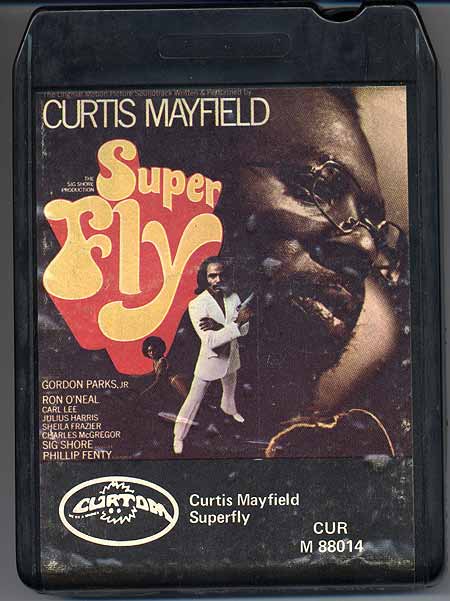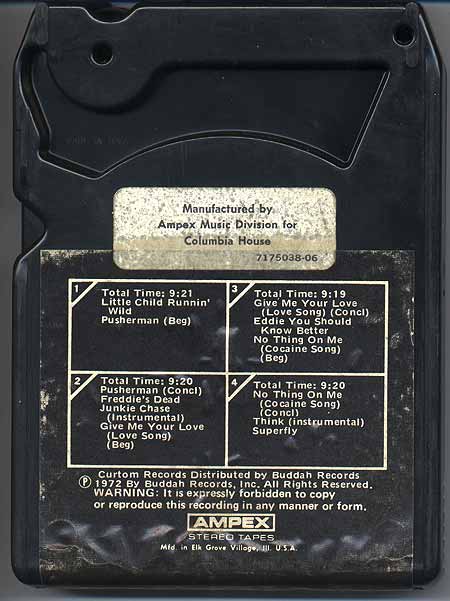Critics on Super Fly soundtrack

The Rolling Stone Greatest 500 Albums of All Time Superfly, # 69
In the blaxploitation-soundtrack derby, Isaac Hayes' Shaft came first -- but that record had one great single and a lot of instrumental filler. Mayfield's soundtrack to Superfly is an astonishing album, marrying lush string parts to funky bass grooves and lots of wah-wah guitar. On top is Mayfield's knowing falsetto. Tracks such as "Pusherman" and "Freddie's Dead" are almost unremittingly bleak, commenting on the movie's glamorization of the drug-trade action and forecasting its inevitable results.
Nelson George, author of The Death of Rhythm and Blues "I think Superfly is better than What's Going On. I think it’s the best album of an amazing era in black music." Elvis Mitchell, Esquire Pauline Kael wrote that The Godfather Part II was the first movie to say no in thunder. She could've said the same thing about Curtis Mayfield’s Superfly soundtrack. A seductive and rhythmic counterpoint to the picture's message about ripping off the Man -- and what blaxploitation picture isn't down with such a sentiment? -- Mayfield's score rebels against the movie's insidious mythologizing of a predatory drug dealer named Priest. Mayfield led his band through a rough and bluesy rendition of the title song and seemed to understand the unspoken dynamic of the movies of the era: This might be the only chance African-Americans got to redress decades of second-class imagery on the big screen and speak to the issues of the day.
Robert Christgau, The Village Voice I'm no respecter of soundtracks, but I can count--this offers seven new songs (as many as his previous LP) plus two self-sustaining instrumentals. It's not epochal, but it comes close--maybe Mayfield writes tougher when the subject is imposed from outside than when he's free to work out of his own spacious head. Like the standard-setting "Freddie's Dead," these songs speak for (and to) the ghetto's victims rather than its achievers (cf. "The Other Side of Town," on Curtis), transmitting bleak lyrics through uncompromisingly vivacious music. Message: both candor and rhythm are essential to our survival. A-
Entertainment Weekly voted Superfly #6 in their 100 Best Soundtracks A textbook case of a soundtrack that artistically dwarfs the film that spawned it, Curtis Mayfield's opus is a testament to the powers of a musician at the top of his game. Mayfield's music imbued the blaxploitation quickie with a moral pulse, taking aim at the scourge of drugs in the inner city. It was one of Mayfield's gifts that his songs could sound joyful and heartbroken at the same time, suggesting the complexities of the human experience. "Pusherman," "Freddie's Dead," the title track--Mayfield's lyrical high-mindedness would have meant naught if the music weren't as addictive as a drug itself.
Ryan Schreiber, Pitchfork (rated 9.8) It's only when you listen to Curtis Mayfield's 1972 soundtrack to Superfly that you can truly get past the film's dated cinematography and bad acting. As most folks with clues realize, Superfly is one of the most influential R&B recordings of the 1970s (the majority of Seattle Grunge Rockers cite this album as an inspiration), and while some of the slang terms are less effective adjectives than flashbacks to yesteryear, they're true to their time. (Admit it; you've never been able to say 'junkie' with a straight face.)
Mayfield's Superfly was probably the most important record for shaping the future of black music. This is one of the first releases to include to the trademark blaxploitation smooth-funk sound. Right from the record's opening of bongos, Hammond organ and hi-hats giving way to a distant, wailing electric guitar, bass drum, and strings and horn sections, it's obvious that this is the production that led to similar work by Issac Hayes and even James Brown. Four years ago, I found Isaac Hayes' Shaft on vinyl for a buck in a thrift store and it became the ultimate "sex music" of my late-teen life. It's got nothin' on Superfly. |
 |
Labels: Superfly






 Curtis Mayfield
Curtis Mayfield Spike Lee
Spike Lee Ralph Bakshi
Ralph Bakshi
 Introduced to Mayfield by Rufus drummer Andre Fisher in 1970, McMullen was invited to audition for the windy city soul man. "I owned all his records, so I already knew the material," recalls McMullen. "Although Mayfield was still singing with the Impressions at the time, he was on the verge of going solo and McMullen was more than ready take that journey with him.
Introduced to Mayfield by Rufus drummer Andre Fisher in 1970, McMullen was invited to audition for the windy city soul man. "I owned all his records, so I already knew the material," recalls McMullen. "Although Mayfield was still singing with the Impressions at the time, he was on the verge of going solo and McMullen was more than ready take that journey with him.


